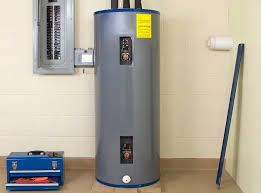Effective Methods to Maintain Your Home's Hot Water System SuccessfullyImportant Care Techniques for Your Home's Hot Water System
Effective Methods to Maintain Your Home's Hot Water System SuccessfullyImportant Care Techniques for Your Home's Hot Water System
Blog Article
What're your concepts on How to Maintain a Hot Water Heater in a Few Simple Steps?

Warm water is necessary for day-to-day convenience, whether it's for a rejuvenating shower or washing recipes. To ensure your hot water system runs efficiently and lasts much longer, regular maintenance is key. This post provides practical pointers and insights on exactly how to keep your home's hot water system to avoid disturbances and pricey repair services.
Introduction
Keeping your home's hot water system might appear daunting, yet with a couple of easy steps, you can ensure it operates efficiently for many years to come. This overview covers every little thing from recognizing your hot water system to do it yourself upkeep ideas and understanding when to call in professional aid.
Significance of Maintaining Your Warm Water System
Regular upkeep not just extends the life-span of your hot water system yet also ensures it runs effectively. Disregarding upkeep can lead to decreased efficiency, greater energy costs, and even premature failing of the system.
Signs Your Warm Water System Requirements Maintenance
Recognizing when your hot water system requires focus can protect against major issues. Keep an eye out for signs such as inconsistent water temperature level, odd noises from the heater, or corroded water.
Comprehending Your Warm Water System
Prior to diving into maintenance jobs, it's valuable to comprehend the standard parts of your warm water system. Normally, this includes the hot water heater itself, pipes, anode rods, and temperature level controls.
Monthly Maintenance Tasks
Routine monthly checks can aid capture small problems prior to they intensify.
Purging the Water Heater
Flushing your hot water heater removes sediment accumulation, enhancing performance and prolonging its life.
Checking and Changing Anode Rods
Anode rods protect against corrosion inside the container. Examining and replacing them when broken is essential.
Checking and Changing Temperature Level Setups
Changing the temperature settings ensures ideal efficiency and safety.
Do It Yourself Tips for Upkeep
You can execute numerous upkeep jobs yourself to keep your warm water system in leading problem.
Looking for Leakages
Frequently check pipelines and connections for leaks, as these can cause water damage and greater costs.
Evaluating Stress Alleviation Valves
Testing the pressure relief valve ensures it operates appropriately and prevents too much stress buildup.
Shielding Pipelines
Protecting warm water pipes reduces warmth loss and can save power.
When to Call a Professional
While do it yourself maintenance is helpful, some concerns require professional knowledge.
Complex Issues Requiring Professional Aid
Examples include significant leakages, electrical problems, or if your hot water heater is consistently underperforming.
Routine Professional Maintenance Perks
Specialist upkeep can include comprehensive evaluations, tune-ups, and guaranteeing conformity with security standards.
Conclusion
Routine upkeep of your home's hot water system is necessary for efficiency, durability, and price savings. By complying with these ideas and recognizing when to look for specialist assistance, you can ensure a dependable supply of warm water without unexpected interruptions.
How to Maintain an Instant Hot Water Heater
Before tinkering with your hot water heater, make sure that it’s not powered on. You also have to turn off the main circuit breaker and shut off the main gas line to prevent accidents. Also turn off the water valves connected to your unit to prevent water from flowing into and out of the appliance. 2. When you’re done, you have to detach the purge valves’ caps. These look like the letter “T” and are situated on either side of the water valves. Doing so will release any pressure that has accumulated inside the valves while at the same time avoid hot water from shooting out and burning your skin. 3. When the purge valves’ caps are removed, you have to connect your hosing lines to the valves. Your unit should have come with three hoses but if it didn’t, you can purchase these things from any hardware or home repair shops. You can also get them from retail stores that sell water heating systems. Read the user’s manual and follow it to complete this task properly. When the hosing lines are connected, open the purge port’s valves. 4. You should never use harsh chemical cleaners or solutions when cleaning your unit. Make use of white vinegar instead. It should be undiluted and you’ll probably use about 2 gallons. 5. Now flush your water heater. This task should probably take about 40 minutes. We can’t give you specific directions for this because the procedure is carried out depending on the type, model and brand of your heater. With that being said, refer to the user’s manual. 6. When you’re done draining the unit, you have to turn off the purge port valves again. Remove the hosing lines that you earlier installed on each of the water valves. Put the valve caps (purge port) back in their respective places and be very careful so as not to damage the rubber discs that are found inside these caps. 7. Now that everything’s back in place, check your user’s manual again to find out how to reactivate your water heating system. 8. Once it is working, turn one of your hot water faucets on just to let air pass through the heater’s water supply pipes. Leave the tap on until water flows smoothly out of it. https://www.orrplumbing.com/blog/2014/september/how-to-maintain-an-instant-hot-water-heater/

I am just very serious about Tips on Maintaining a Water Heater and I'm hoping you appreciated our piece. Sharing is good. Helping people is fun. Thank you for your time. Revisit us soon.
Click Here Report this page